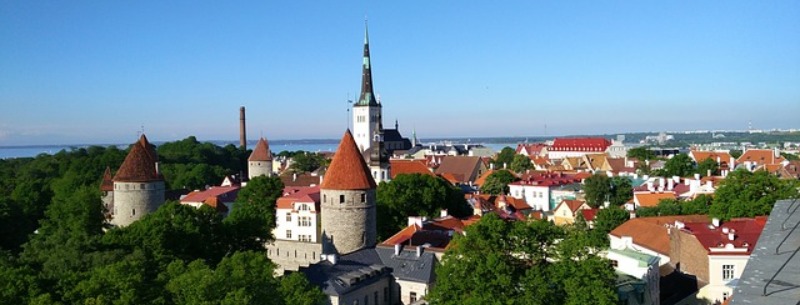Tallinn is one of the most enchanting cities in Europe thanks to its blend of modern and medieval. In the Estonian capital, carved stone walls give way to restaurants, boutiques, nightclubs and cafes that sit in the shadows of 14th-century churches. The Old Town is UNESCO World Heritage site, encompassing historic gems that bring the city’s medieval past alive. A short walk away lies a growing gallery scene showcasing some of the country’s most innovative and imaginative artists. This blend of the past and present makes Tallinn endlessly charming, and there is plenty to explore in the vibrant capital.
Start your visit at the Balti Jaama Turg, a Soviet-era market just behind the city’s main train station. Locals head there to buy sides of beef, spare car parts and used clothes, but visitors can find Soviet memorabilia, rare coins, locally made jams, antiques and more. The wide range of goods being sold from the 50 or so stalls is interesting, but the real draw is the local color that permeates the market.
The medieval Old Town is well-known for its authentic and well-preserved Hanseatic architecture, and nearly every traveler will find something to love in the district. The combination of historic buildings, boho galleries, intimate cafes and terraced restaurants forms a rich cultural scene and an enchanting atmosphere.
Most of the buildings in the Old Town are preserved in their original 11th-century form, including warehouses, merchant’s residences, church buildings, barns, important state offices and pubs. Nicknamed Europe’s ìmedieval pearl,î walking the cobblestone streets of Old Town feels like stepping back in time.
Start your exploration of the area at the Town Hall Square, which has been the social heart of Tallinn for over seven centuries. In the summer, the square hosts concerts and festivals, and in the winter, it transforms into a delightful Christmas market. The Gothic Town Hall sits on the square and today houses a concert hall and museum. The oldest pharmacy in Europe sits across the square and, according to local legend, is the birthplace of the sweet treat marzipan.
Follow the city walls’ route past the 26 watchtowers, then stroll down the narrow Muurivahe street to see the oldest section of the wall in the city. Continue walking until you reach St. Olaf’s Church, once the highest building in the world when it was constructed in the 15th and 16th centuries. The church is still active, and visitors can explore the carved stone walls outside of service times.
The nearby St. Nicholas’ Church is also worth a visit. Built in the 13th century in honor of sailors and fishermen, the church has recently been restored after Soviet bombings nearly destroyed it. Today, the church houses both a concert hall and an art museum featuring works by Bernt Notke.
Other notable places to explore in the Old Town include St. Mary’s Cathedral, the Museum of Occupations, the ex-KGB Headquarters and the solid limestone Toompea Hill, which offers some of the best views of the city.
Tallinn has many treasures outside of the Old Town. The Open Air Museum is especially intriguing with its 72 transported buildings that show off architecture from around the country. The museum gives visitors a glimpse at life in the country and regularly sponsors free traditional dancing programs.
Other must-see sights in the capital include the National Art Museum, the Holy Birgitta Monastery, the haunting Patarei Prison, the Tallinn TV Tower, the Metsakalmistu Cemetery, Tallinn Botanical Gardens, Kadriorg Palace and the Rotterman district, which is filled with lovely Art Nouveau buildings and stylish restaurants, cafes and boutiques.
Tallinn Geographical Location
Tallinn is located on the northern coast of Estonia along the Gulf of Finland. It is Estonia’s largest city with a population of approximately 415,000.
Tallinn Language
Estonian is the official language of Estonia and is spoken by the majority of the population. Russian is spoken by approximately one-third of the population in addition to other minority languages.
Tallinn Predominant Religion
- 40% None
- 32% Other
- 14% Evangelical Lutheran
- 13% Orthodox
- 1% Other Christian
Estonia is not a very religious country, as evident by the demographics, but does guarantee freedom of religion as well as separation from church and state.
Tallinn Currency
The Euro is the official currency of Estonia.
Tallinn Climate
Tallinn experiences cool summers and cold winters with relatively consistent precipitation throughout the year.
Tallinn Main Attractions
- Town Hall Square
- Town Wall and Towers
- St. Olav’s Church and Tower
Other Attraction in Tallinn
- St. Catherine’s Passage and Master’s Courtyard
- Toompea Castle and Pikk Hermann Tower
- Freedom Square
- Kadriorg Park and Palace
